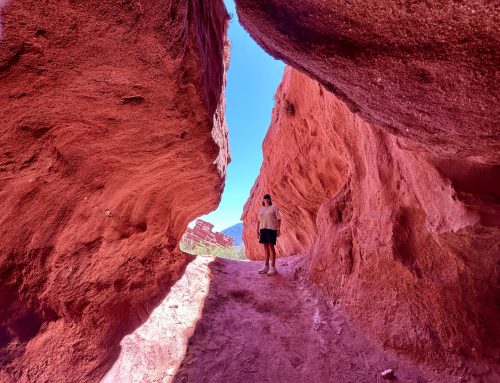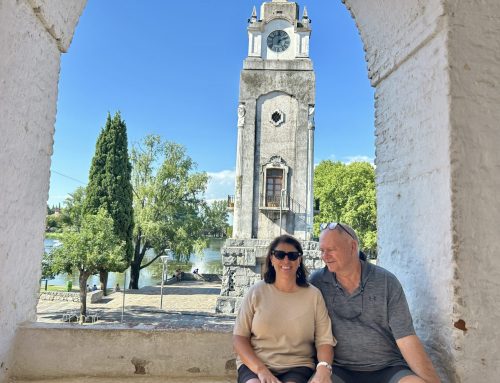We’ve just had a couple of days in Santiago, on route to Antarctica. We flew Latam Airways from New Zealand taking about 11 hours. I’m not sure I would choose Latam by choice, but it was the best on offer and here were are. They are expensive as they basically have a monopoly over the route.

Santiago
As you know with travel, you win some and lose some, and our accommodation at the Magnolia Hotel in Santiago made up for any shortcomings in Latam’s service.
Accommodation
Hotel Magnolia is behind a discreet door in the downtown area of Santiago. It’s slightly quirky sitting rooms, library and open bar (free) make the communal areas inviting to sit, read, converse and have a tipple. The mix between old and new is perfectly executed with exposed brick walls, yet state of the art architecture and amenities. The roof top bar and restaurant and Demo, their fine dining degustation restaurant offer the best of Chilean cuisine.

The open (free) bar at the Hotel Magnolia was a generous touch.

The breakfast room had a warm and calming interior.

This beautiful bird was etched into the headboard of our bed.
As luck would have it, the hotel was offering a free wine tasting for guests the night we arrived. We were welcomed by the sommelier who had recently worked at Kinross in Gibbston Valley. Kinross is one of our favourite places for purchasing Central Otago Pinot Noir. He talked us through a local sparkling wine, Chardonnay and Cabernet Sauvignon, paired with cheese. A touching start to what was a very enjoyable stay.

Tim enjoying a good catch up with sommelier, Gerald.

We enjoyed the wines paired with local cheese.
Bus tour – it’s all about the city vibe
There is a 16 hour time difference between New Zealand and Chile that plays havoc with your sleep for the first couple of nights, so up early we were ready to explore the city. I had tricked Tim into agreeing to Turistik bus tour, which is essentially a red bus tour. He would rather die than go on one! However, with the hilly terrain of Santiago, it included a cable car and funicular ride to the Cerro San Cristobal. This wonderful green space provides a sense of calm in a sprawling city, with a statue of the Virgin of the Immaculate Conception at the summit. The vista from the top also offered great views of the city and the Andes Mountains.

The funicular headng down the hill from Cerro San Cristobal.

Tim, secretly loving his ‘red bus’ tour.
Another highlight of the tour was Cerro Santa Lucia. This is a public park on a small hill in the historic centre of Santiago. At the entrance is a splendid neo- classical, ensemble of curved stairs and a fountain, dedicated to the Roman god of the seas. It’s a work of art as the water cascades to two pools below. The walk to the summit only takes about 15 minute and is well worth it.

The entrance to Cerro Santa Lucia.

The commentary on the bus tour applauded Santiago’s financial district. Unlike the slightly dowdy downtown area where street art was prevalent, this area was lush, green and impeccably maintained. The skyline was a sea of skyscrapers including the tallest building in Latin America. With strong political stability in Chile, (unlike many of their neighbouring countries) they are proud of their financial district, nicknamed, Sanhatten.

Santiago City is one big mural.

In contrast to “Sanhattan” and other well-heeled areas of Santiago, there are many parts of the city not as salubrious. Over 1.5 million immigrants from Venezuela are in Santiago, all trying to make a living. The pavements are used as commercial spaces for the immigrants to sell whatever they can, to pay their bills.
Historic Downtown -the cathedral was the highlight
Plaza De Armas, is the heart of Santiago. This type of Plaza exists all over Chile. When the Spaniards established their cities, the Plaza would be the point of axis for their grid system of roading.
Several historic building surround the Plaza, including the Cas Colorado Museum, Museum of Natural History and others, but my favouite was the Cathedral.

Santiago’s Cathedral
Museum of Memory and Human Rights – traces the scars of the violent coup
The highlight of our brief time in Santiago was the Museo de la Memoria los Derechos Humanos. It commemorates the victims of human rights violations during the military dictatorship led by Augusto Pinochet between 1973 and 1990, scarring the country forever.

Museum of Memory and Human Rights tell the story of the coup from 11 Septenber 1973 to 1990.
The museum walks visitors through Chile’s dictatorship, following General Pinochet’s military coup on September 11, 1973. He overthrew the democratic socialist, President Allende and his Popular Unity coalition government. It divided the country until the nation returned to democracy in 1990.
Following the destruction of the palace and its administration on in 1973, 3,000 men, women and children disappeared or were executed, with another 200,000 people exiled.
A haunting wall in the museums displays the faces of the 3,000 people.

3,000 people disappeared or where executed during the coup.
 The date of the coup is the same as attack on the USA, 11 September. As a result, the coup is often referred to as “the other 9/11”.
The date of the coup is the same as attack on the USA, 11 September. As a result, the coup is often referred to as “the other 9/11”.

Traveller notes
There are no Spark roaming packages available in Chile so the rates are extortionate. Be wary.
Also, be mindful of how many pesos you get out of the ATM machine. If you use them to pay your hotel bill, there is a 19 % penalty. They want hard currency such as US$.




Leave A Comment